Physical Address
304 North Cardinal St.
Dorchester Center, MA 02124
The history of prosthetic replacement properly begins with exoprosthetic replacement. Possibly the first recorded such explant is the so-called Cairo toe dating back to 950 BC. Refinements of exoprosthetic replacement were documented in the 16th century with an articulated upper extremity prosthesis successfully used during battle ( Fig. 85.1 ). The earliest attempts at elbow arthroplasty were resection procedures performed as early as 1780 and interposition documented by Defontaine as early as 1887. It appears the earliest documentation of total endoprosthetic elbow replacement was of an ivory device designed to treat elbow resection for sarcoma in 1891 by Gluck. Subsequent efforts to treat massive bone loss, usually due to trauma, were custom hemireplacements. These designs were marginally successful in the short term and ultimately failed because of instability or loosening due to poor fixation and the lack of understanding of joint forces and kinematics.
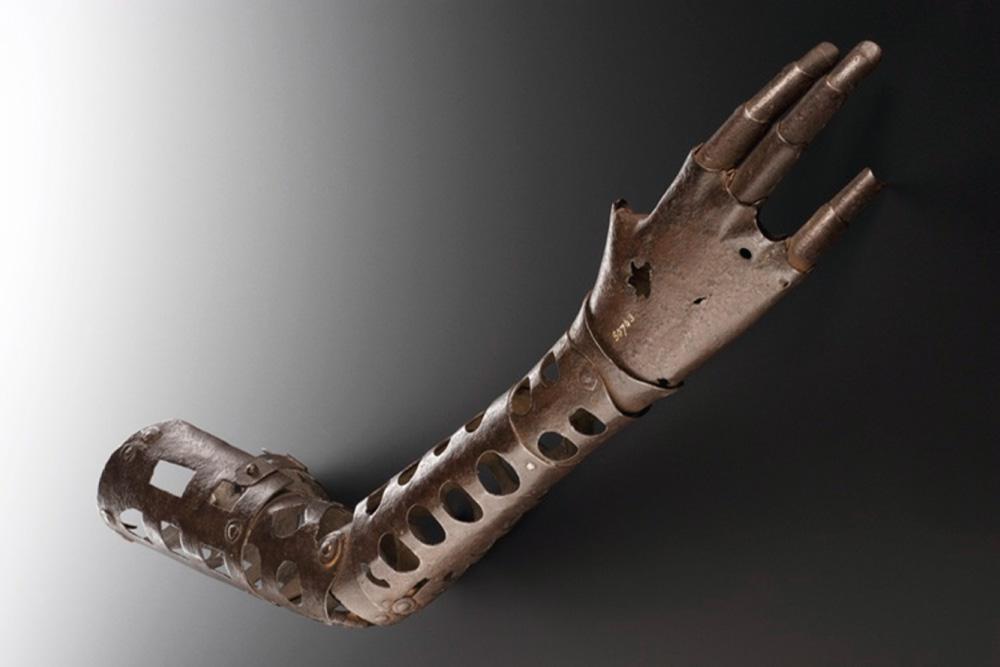
The advent of cement fixation for the hip ushered in a new era of implant design at the elbow, but the failures continued due to, once again, the lack of understanding of the high forces transmitted across the joint and the complex kinematics. These deficiencies were addressed in the late 1970s, resulting in reliable elbow joint replacement, however, with continued functional restrictions. Although we consider the “modern era” of joint replacement to have begun in the 1970s with the introduction of poly(methyl methacrylate) for fixation, this era continues to evolve. The definition of the temporal eras that follow are somewhat arbitrary, with moderate overlap in concept and execution.
Boerema in 1941 and Mellon in 1947 reported on the use of a press-fit metal and an acrylic hemireplacement, respectively, of the distal end of the humerus for massive bone loss. Their reports characterized the limited but extreme injury that prompted the use of such implants.
Bone loss on both sides of the joint even gave rise to articulated devices ( Fig. 85.2 ). Materials such as nylon, acrylic, stainless steel, and even vulcanized rubber were used in these early implant designs. However, without bone cement, these prostheses became loose, unstable, or both.
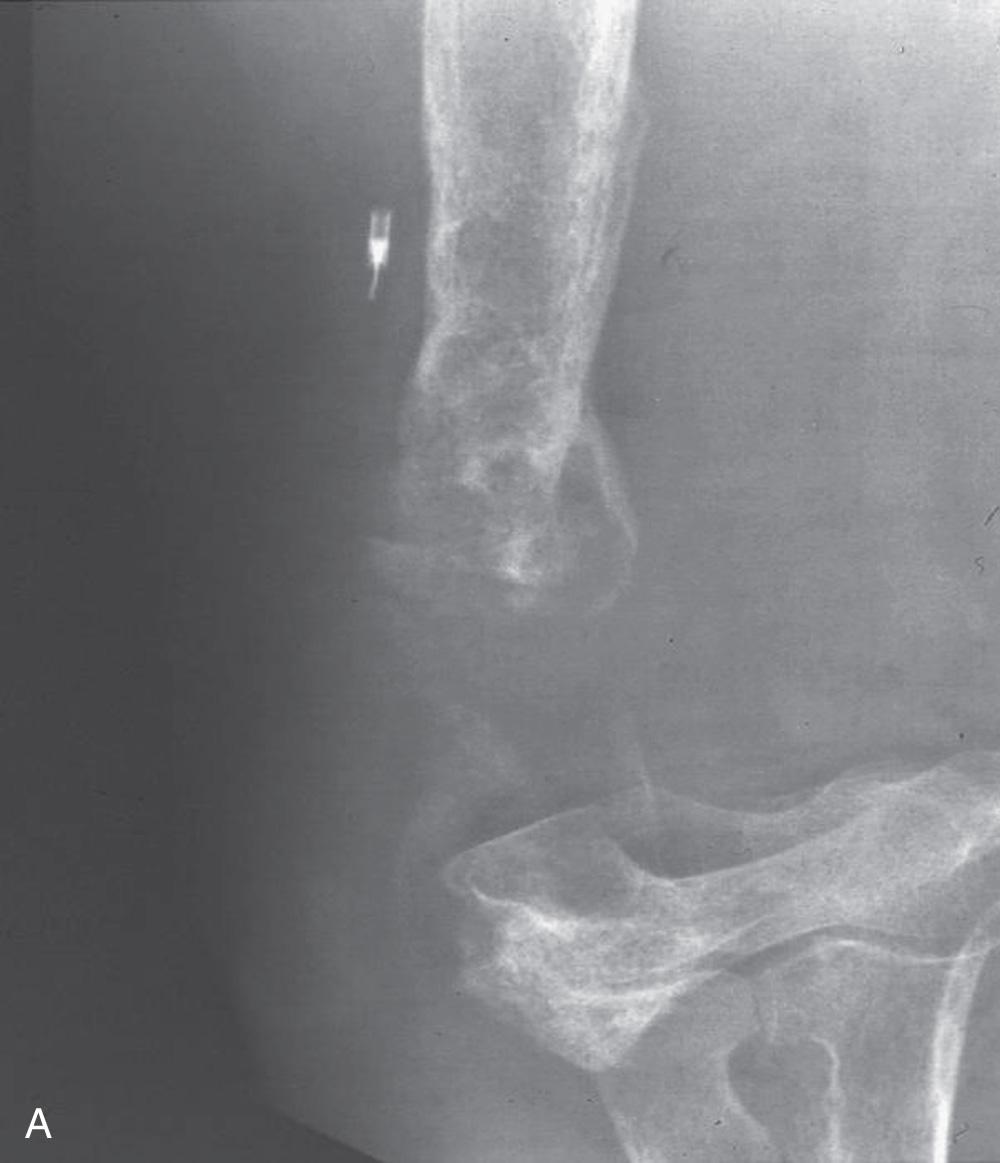
Venable in 1952, Barr and Eaton in 1965, and MacAusland in 1954, reported experiences with the use of custom metallic endoprosthetic replacement of the distal end of the humerus ( Fig. 85.3 ). Similar efforts were applied to the ulna but often resulted in instability. Salvage, then as today, involved conversion to a custom linked implant ( Fig. 85.4 ). At the ulna, a true resurfacing device was designed at the Mayo Clinic, the so-called saddle, which was surprisingly successful in prosthetic resurfacing of the sigmoid in the late 1960s ( Fig. 85.5 ).
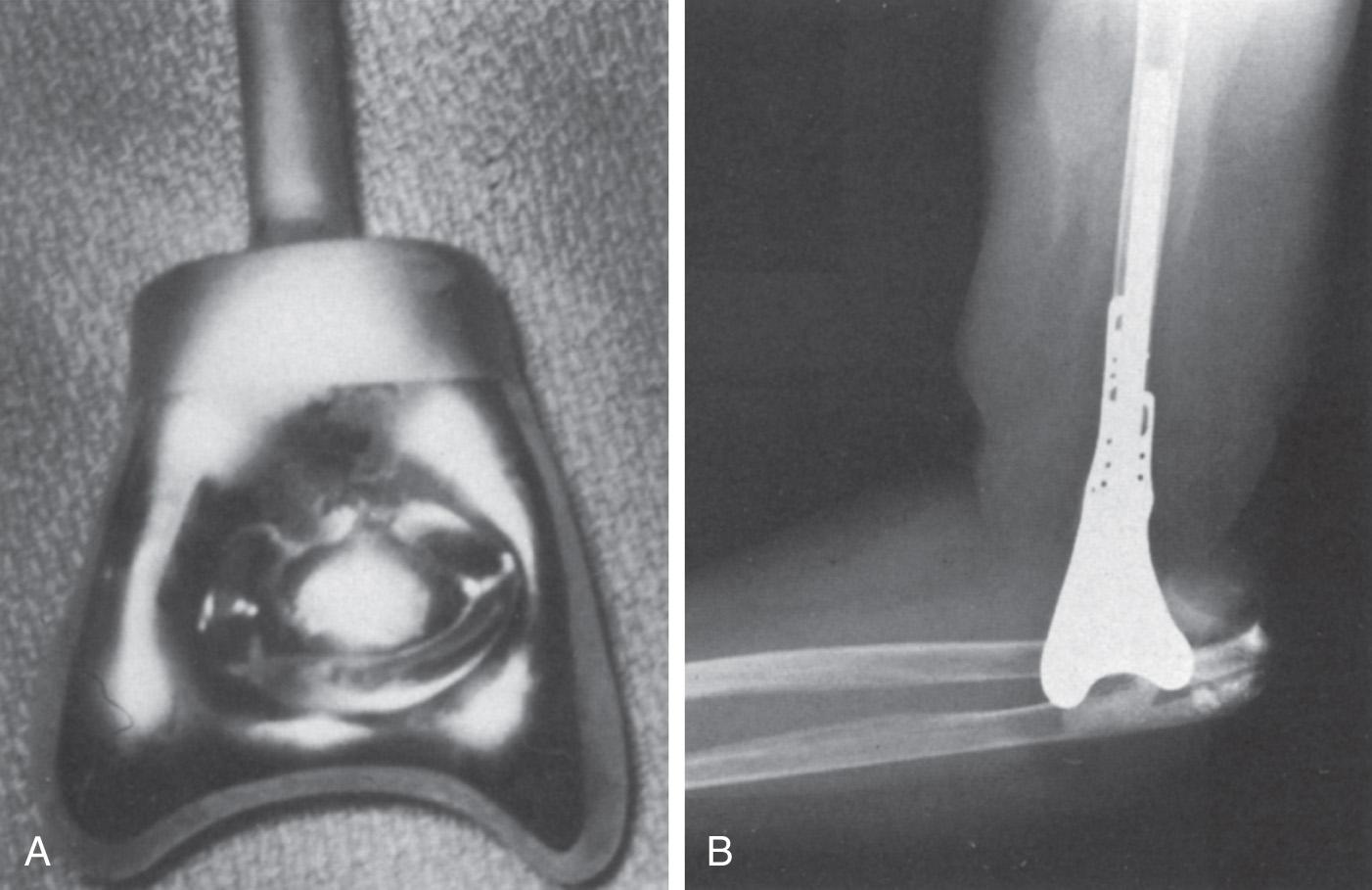
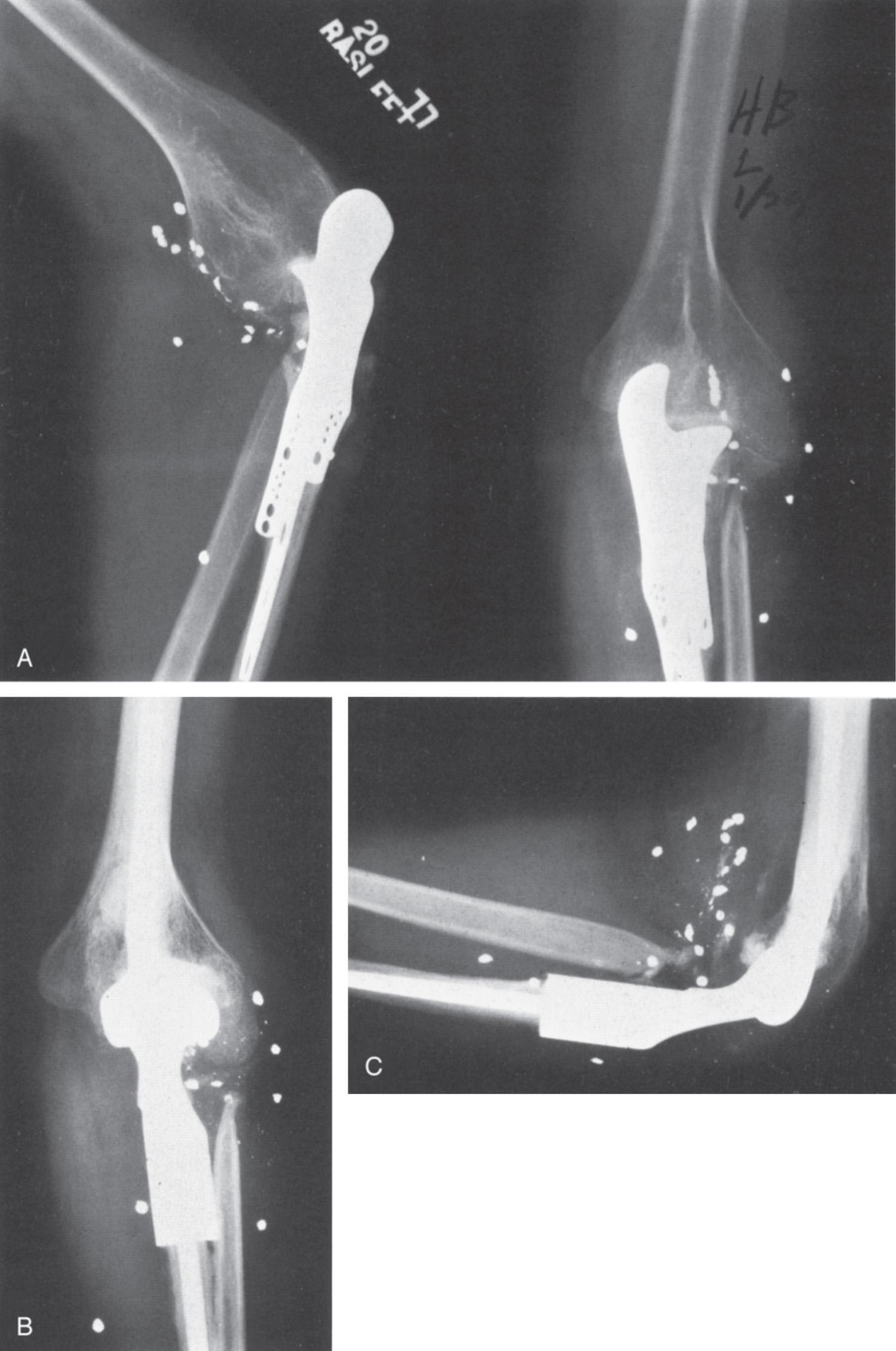
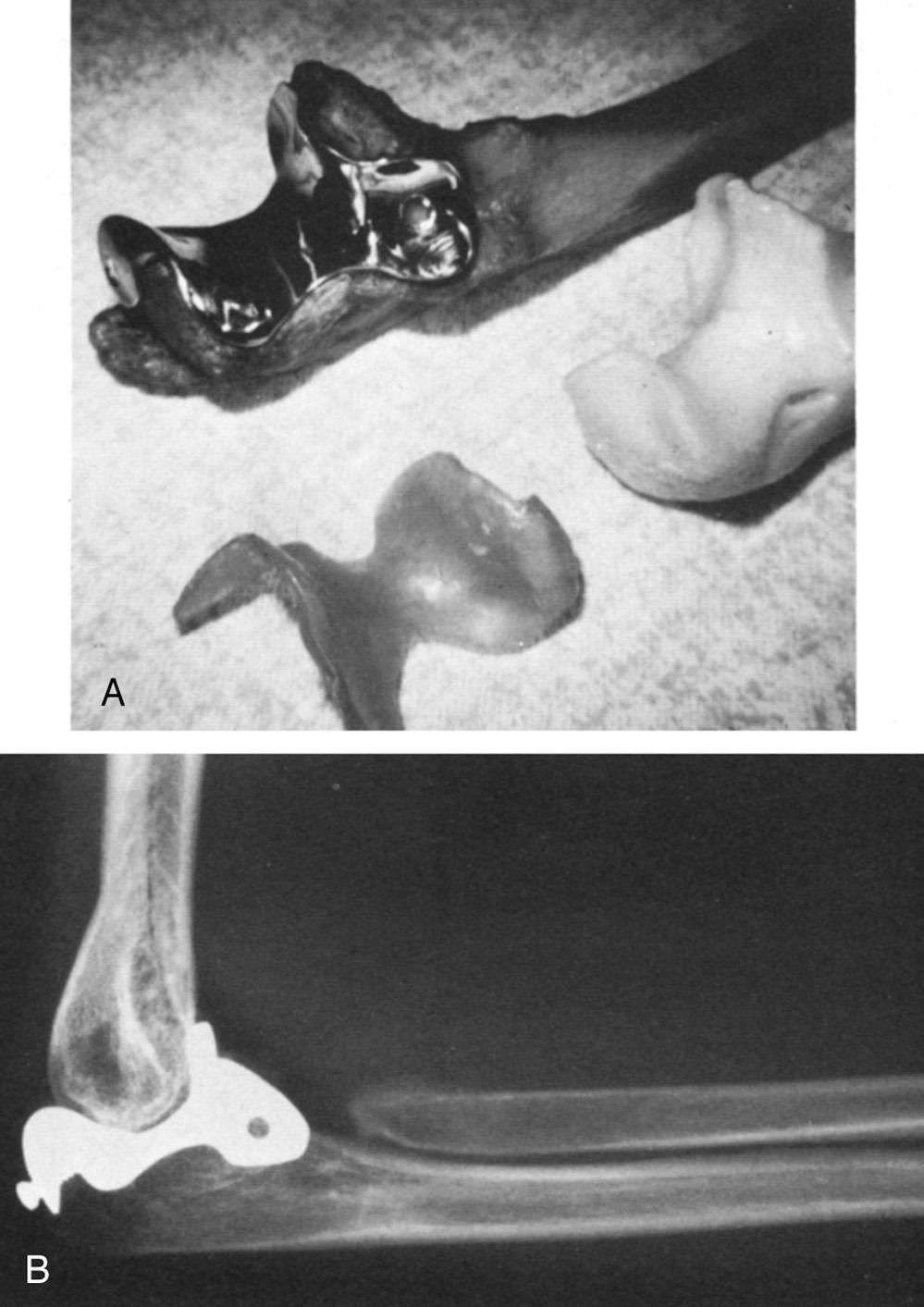
Become a Clinical Tree membership for Full access and enjoy Unlimited articles
If you are a member. Log in here